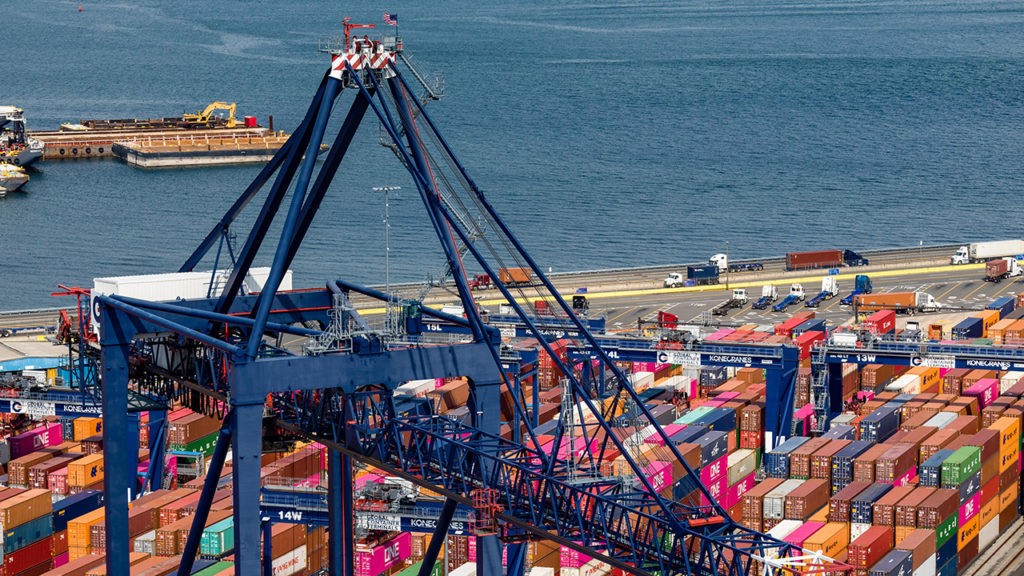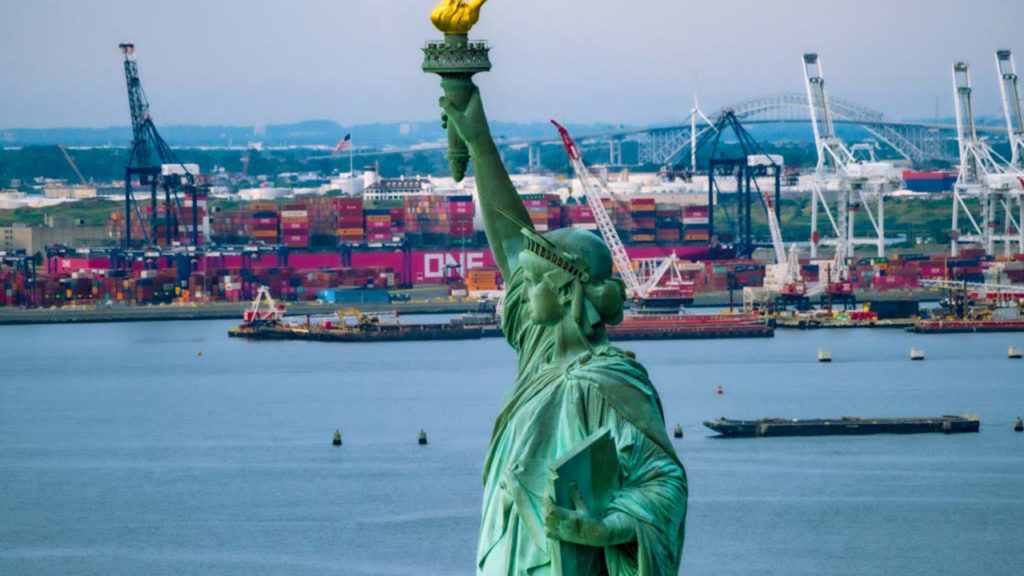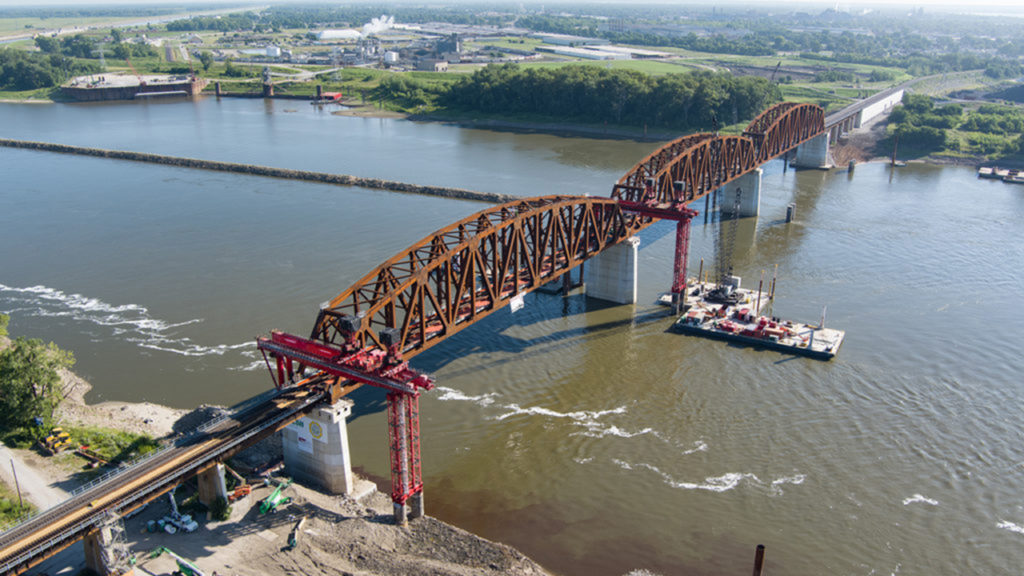
PANY&NJ, SLRF See Growth Potential
Written by William C. Vantuono, Editor-in-Chief
Michael P. Bozza
At the recent FreightWeekSTL 2023 conference in St. Louis, Mo., Port Authority of New York & New Jersey (PANY&NJ) Deputy Port Director Michael P. Bozza said there is growth potential for the volume of goods moving between the St. Louis region and the East Coast, and that the Port of New York & New Jersey is ready to take on that additional volume. Bozza spoke during a Freight Summit hosted by the St. Louis Regional Freightway (SLRF).
The East Coast’s largest container gateway, the Port of New York & New Jersey accommodates more than 30,000 rail lifts annually for goods moving back and forth between it and the bi-state St. Louis region, which has direct, daily rail connectivity via Norfolk Southern and CSX. While it may be just a small percentage of the total 700,000 rail lifts the Port handled in 2022, Bozza pointed to several reasons for volume increases.


Mary Lamie, Executive Vice President of Multi Modal Enterprises for Bi-State Development, which operates SLRF, called attention to the similarities between Bi-State Development and the Port of New York & New Jersey. “Both agencies have an interstate compact that was created by Congress to coordinate and lead regional or national matters like transit,” she said.
“Even if our physical port it is just one component of PANY&NJ overall operations, it is a significant player in the global supply chain, said Bozza. “Because of the size of the local market, all the major ocean carriers call on the Port of New York and New Jersey, and for 75% of the vessel calls coming to the Port, NY/NJ is the first stop.”
“Why is that important for St. Louis?” asked Bozza. “We’ve invested more than $600 million in rail facilities so that every one of our marine terminals has on- or near-dock rail, and we have capacity for more than 1.5 million lifts of rail cargo alone. Our vision is that rail cargo and intermodal cargo to places like St. Louis will help us grow and be a major port gateway, not just on the East Coast, but in the country.”

Bozza said with approximately 700,000 rail lifts in 2022, the Port has plenty of capacity to accommodate additional lifts. “The more exports that we can get, the more we can drive and attract that intermodal cargo and continue to be a major partner,” he said. “Shippers in the St. Louis region can take advantage of the fact that we are a first port of call for many ocean carriers and are accommodating increasingly larger ships capable of carrying 16,000 TEUs (20-foot equivalent units). Because the ships are so large, they must spend more time in port. They’ll spend three, maybe four days in port. “So, with your box coming to St. Louis with a three-to four-day transit time on rail, it can be here before the ship even leaves New York and goes on to Norfolk, Savannah or other destinations. If speed is a concern, we’re well-positioned with the infrastructure, with the time, and with the scheduled service to get goods there quickly.”
Bozza added that some vessels do “double calls.” Starting in New York, the ships will travel down the East Coast and then will return to New York. “So, from the export standpoint, exports from the St. Louis region can be added at that last port of call before the ocean vessels head back to Europe, Asia or other global destinations,” he said.

Bozza pointed to pandemic-related changes in the supply chain that have been a positive for the Port of New York and New Jersey. He said the share of goods coming from China was “previously well over 35%, but now it’s under 30%, with market share going to places like Vietnam, India, Bangladesh and other countries that, from a shipping perspective, make more sense to come through the Suez Canal than to go to the West Coast.” He called attention to the growing market share in India, and in particular, the products moving between his port and the bi-state St. Louis region. “India is your number one trading partner, and it’s a lot of steel, plastics parts and components,” said Bozza. “And that’s a lot of what your exports are as well. So, it seems to me you’re pulling in the raw materials and you’re shipping out transportation equipment, chemicals, so on and so forth.”
Bozza said he looks at the supply chain “as a pipe. Where it’s sourced and where the shipping lines are, the pipe is very wide. And as you go to the port, the truck, the rail, the warehouse, out to the last mile, that pipe gets thinner and thinner and thinner. And at the end, it’s kind of like the pipe underneath your sink in your house. When that gets crimped, everything else is impacted.”
From Bozza’s perspective, the Port of New York & New Jersey did well comparatively in terms of maintaining fluidity during the COVID-19 pandemic, but changes are needed throughout the supply chain to manage the next surge in cargo. The Port of New York & New Jersey’s Council on Port Performance, which includes many stakeholders like those working closely with the St. Louis Regional Freightway, “was instrumental in guiding the pandemic response,” he said. “The Council is now focusing on that far end of the supply chain, trying to identify the warehouse and distribution owners and working with the railroads to try to open up new avenues to keep freight moving.

“It’s clear you and your team with the Port of New York and New Jersey are playing a significant role in the movement of freight in and out of the United States,” said Lamie. “We appreciate everything you are doing from an investment perspective because that is obviously going to be helping the Midwest and regions like the St. Louis area. We also are spending a significant amount of our time and effort so we can support everything that you’re doing with your facility,” she said, referring to the $3.7 billion in projects on the St. Louis Regional Freightway’s 2024 Priority Projects List.



